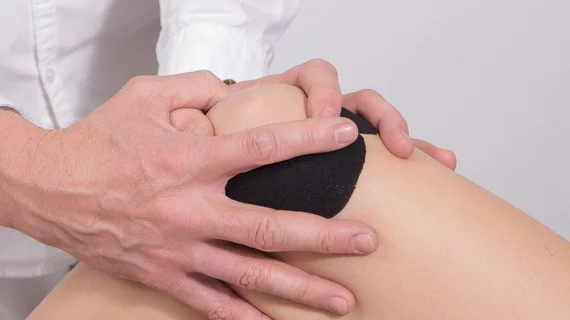A deep learning-based diagnosis system can identify ACL tears in MRI scans as well as radiologists, according to a new study published in Radiology: Artificial Intelligence.
“Detecting an ACL tear relies on evaluating an obliquely oriented structure on multiple image sections with different tissue contrasts using a combination of MRI findings including fiber discontinuity, changes in contour, and signal abnormality within the injured ligament,” wrote Fang Liu, PhD, of the University of Wisconsin School of Medicine and Public Health in Madison, and colleagues. “Investigation of the ability of a deep learning approach to detect an ACL tear would be useful to determine whether deep learning could aid in the diagnosis of complex musculoskeletal abnormalities at MRI.”
The team’s detection system included three different convolutional neural networks (CNNs), two that isolated the ACL on the MRI scans and a third that determined if the ACL had any “structural abnormalities” that may represent a tear. The system was used to analyze spin-echo MRI images of 175 patients with a full-thickness ACL tear and 175 control patients, achieving a sensitivity and specificity of 0.96. Its area under the ROC curve (AUC) was 0.98.
Five clinical radiologists with various levels of experience then independently reviewed the MRI scans of 100 patients from the study’s hold-out test dataset. They were all blinded by the findings from the patient’s knee surgeries. The specialists had a sensitivity that ranged from 0.96 to 0.98 and a specificity that ranged from 0.90 to 0.98.
“Our study has demonstrated the feasibility of using a deep learning–based approach to detect a full-thickness ACL tear within the knee joint at MRI by using arthroscopy as the reference standard,” the authors wrote.
Liu and colleagues noted that the clinical radiologists were actually at an advantage because they could use ancillary findings when viewing the images. In addition, they were able to evaluate all image sections from five MRI sequences while the detection system was limited to just certain sagittal proton density-weighted and fat-suppressed T2-weighted images.
The researchers also explained that their study did have certain limitations. The detection system’s three CNNs were “connected in a cascaded fashion and not a single network from end to end,” for instance, and they were trained individually instead of all at once.
“Another limitation was the relatively small training dataset used in our study,” the authors wrote. “As a result, several data processing techniques, including transfer learning, were needed to maximize training efficiency. Use of larger training datasets in future studies may further improve the diagnostic performance of the ACL tear detection system.”

